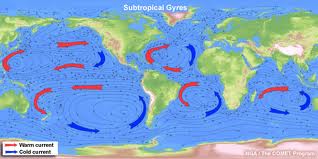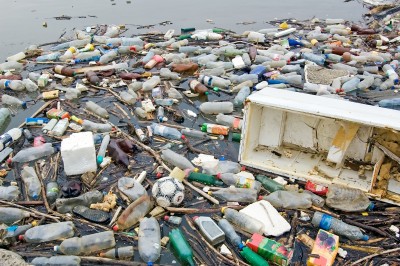Daily Update 3.7
Week 6: Module 3: Date 3/7/13
Trash: it’s everywhere, in our houses, our schools, and increasingly in our oceans. At this point, many people have heard of the great Pacific trash patch, which varies in size, depending on whom you ask, from the size of Texas to twice the size of the United States. While the Pacific trash patch is the most famous one there is a similar, albeit smaller, patch in the north Atlantic. In fact there are thought to be five trash gyres in the world’s oceans. These trash patches form due to the natural gyres of the oceans. These gyres have a whirlpool like effect where there is little current in the center leaving the trash stuck in the middle.

What comes to mind when you think of a floating patch of plastic trash? Does it look something like the image below?

In reality most of the trash in the oceans are tiny little bits of plastic.
Miriam Goldstein, of the Scripps Institution of Oceanography at the University of California San Diego [had this to say about the trash patch in the Pacific]: “It’s not really easy to see. The ocean looks like the ocean anywhere else, although you will see larger pieces of trash floating by. But if you put a net in the water, you’ll grab hundreds of thousands of tiny pieces of plastic.”
The reason that these garbage patches are hard to see is its size and much of the plastic is suspended in the ocean just below the surface. As you may know plastics do not biodegrade. They disintegrate into smaller and smaller pieces all the way down to the molecular level, where they remain. In the harsh environment of the ocean some plastics can break down within a year. As they do this they leach toxic chemicals into the ocean. The effects of these toxins to the ocean are not yet known but we can be fairly certain that they are going to have an impact on the ocean. On the other hand, the plastic solids that are floating about have a visible effect.
These small bits of plastic are ingested by numerous wildlife, particularly seabirds. The albatross is an example of one of these birds, not only does it eat the plastic, it often feeds it to its young. For more images of this calamity see http://www.wired.com/rawfile/2012/08/albatross-midway-chris-jordan/
The JRH’s chosen route will have them passing through the southwest section of the north Atlantic gyre. We will look for an update from them when they are there to hear their report on the trash.
Sources*
http://news.nationalgeographic.com/news/2010/03/100302-new-ocean-trash-garbage-patch/
http://news.nationalgeographic.com/news/2009/08/090820-plastic-decomposes-oceans-seas.html
